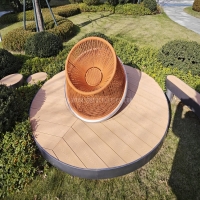Welcome to the website for landscape facilities products and knowledge.
How does the table’s construction minimize noise during use, such as from plates or utensils?
Modern table construction employs sophisticated engineering principles to significantly reduce operational noise from dining activities. The foundation of noise minimization begins with specialized materials that absorb sound vibrations rather than amplifying them. High-density rubber underlays and composite core materials create a natural barrier against sound transmission, preventing the sharp clatter of utensils and plates from echoing through the space.
Advanced table designs incorporate multi-layered surfaces that combine rigid substrates with visco-elastic damping layers. These layers work in concert to dissipate vibrational energy before it can transform into audible noise. When utensils contact the surface, the energy disperses horizontally through the damping core rather than reflecting back as sound waves. This technology, borrowed from architectural acoustics, transforms what would be sharp impacts into muted, low-frequency vibrations that are barely perceptible to the human ear.
The table's edge construction plays an equally crucial role in noise reduction. Rounded, softened edges with integrated dampening strips prevent plates from creating high-frequency ringing sounds during placement. Furthermore, many contemporary tables feature micro-perforated surfaces that act as acoustic panels, trapping sound waves within microscopic cavities where their energy dissipates as harmless heat.
Structural engineering innovations include isolated leg systems that prevent sound transmission to the floor. These systems use specialized gaskets and isolation pads that decouple the table surface from its supporting structure, creating an acoustic break that stops noise from traveling. The result is a dining experience where the focus remains on conversation and enjoyment, undisturbed by the typical clatter of mealtime activities.
Manufacturers also apply textured finishes that create microscopic air pockets between tableware and the surface. This minute separation prevents the suction effect that often causes plates to create loud popping sounds when lifted. Combined with carefully calibrated surface tension, these finishes ensure that even metal utensils make minimal contact noise, proving that true luxury in modern furniture lies not just in appearance, but in the engineered silence during use.
Related search:

Recommendation
Swivel chair-Specialty steel structure woven rattan leisure chair with rotatable design